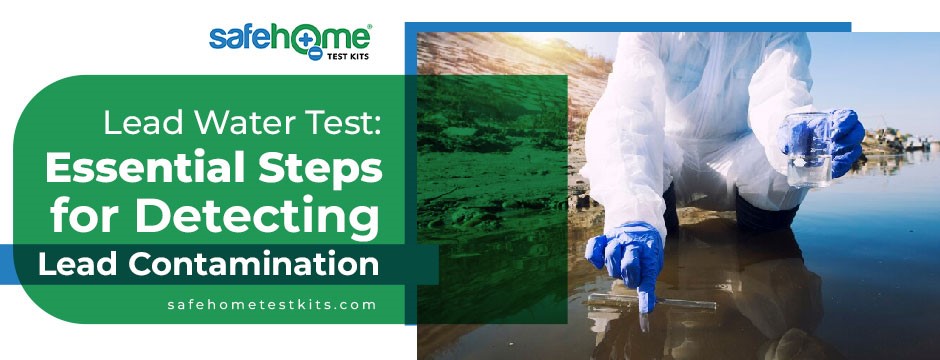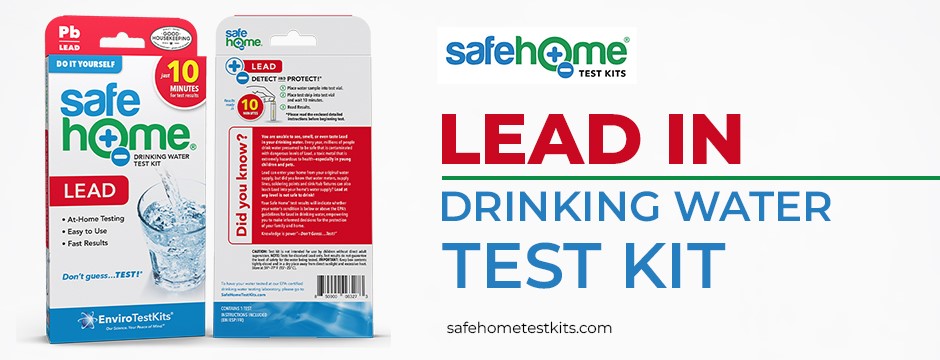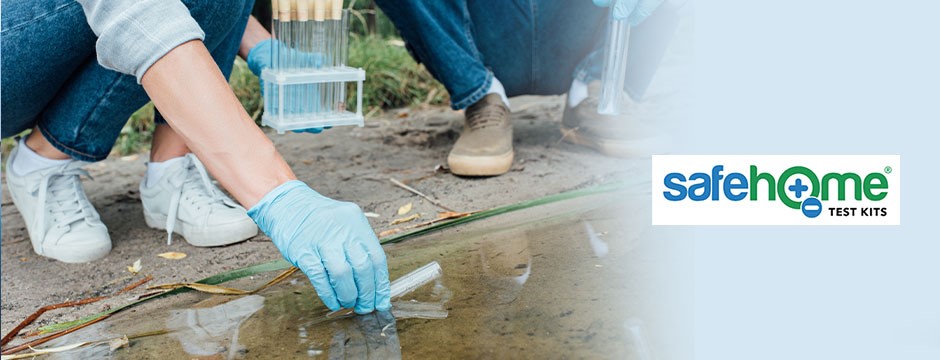Lead Water Test: Essential Steps for Detecting Lead Contamination

Water is a fundamental resource for life, and the quality of the water we consume directly impacts our health. Lead contamination in drinking water poses a serious threat, as lead exposure can have severe health consequences, especially for children and pregnant women. In this informative blog, we’ll explore the essential steps for detecting lead contamination through a Lead Water Test, empowering you to ensure the safety of your water supply.
Understanding the Threat of Lead Contamination:
Lead is a toxic metal that can enter drinking water through various sources, including old lead pipes, plumbing materials, and fixtures. Exposure to lead in drinking water can result in a range of health issues, such as developmental delays in children, cognitive impairments, and cardiovascular problems in adults. Recognizing the potential dangers of lead contamination underscores the importance of regular testing to safeguard the health of your household.
The Importance of Lead Water Testing:
Lead Water Testing is a crucial step in identifying and addressing lead contamination in your drinking water. Testing allows you to determine the presence of lead, assess the level of contamination, and take appropriate measures to mitigate the risks. While public water systems are typically monitored for lead, homeowners with private wells or older homes with lead pipes may need to take proactive steps to ensure the safety of their water.
Steps for Conducting a Lead Water Test:
Identify Potential Sources of Lead:
Begin by identifying potential sources of lead in your plumbing system. Lead pipes or fixtures are more likely to be found in homes built before 1986. Determine the materials used in your plumbing, including pipes, solder, and faucets, as this will guide your testing strategy.
Choose the Right Water Testing Kit:
Select a Lead Water Testing Kit from a reputable supplier. These kits typically include sample containers, instructions, and sometimes a prepaid mailer to send the samples to a laboratory for analysis. Ensure that the kit is designed specifically for testing lead.
Collect Water Samples:
Follow the instructions provided with the Lead Water Testing Kit to collect water samples. It’s essential to collect samples from both cold and hot water sources, as lead levels can vary. Run the water for a few minutes before collecting the sample to ensure that the water being tested is representative of what you consume.
Send Samples to a Certified Laboratory:
Mail the collected water samples to a certified laboratory for analysis. Choose a laboratory accredited by the Environmental Protection Agency (EPA) for reliable results. The laboratory will conduct tests to determine the concentration of lead in your water.
Interpret the Results:
Once the laboratory analysis is complete, you’ll receive a report detailing the lead levels in your water. The EPA sets the action level for lead in drinking water at 15 parts per billion (ppb). If the results show lead levels above this threshold, it indicates a potential health risk, and corrective actions should be taken.
Take Remedial Actions:
If lead contamination is confirmed, take immediate remedial actions to address the issue. This may involve installing water filters certified to remove lead, replacing plumbing components, or, in severe cases, considering the replacement of lead service lines.
Preventive Measures to Reduce Lead Exposure:
While testing is crucial for identifying existing lead contamination, implementing preventive measures can help reduce the risk of lead exposure:
Use Cold Water for Cooking and Drinking:
Cold water is less likely to leach lead from plumbing materials than hot water. Use cold water to cook, drink, and make baby food.
Flush Pipes Before Use:
If water has been stagnant in the pipes for several hours, especially in the morning, flush the pipes by running the cold water for at least two minutes before using it for consumption.
Install a Certified Water Filter:
Consider installing a water filter certified to remove lead. Look for filters that meet the NSF/ANSI Standard 53 for lead reduction.
Replace Lead Plumbing Components:
If your plumbing contains lead pipes or fixtures, consider replacing them with lead-free materials. Consult with a professional plumber for guidance on suitable replacements.

Ensuring Water Safety with Safe Home® Lead in Drinking Water Test Kit
In the pursuit of a healthy home environment, the safety of your water supply takes precedence. Recognizing the importance of comprehensive lead testing, we present the Safe Home® Lead in Drinking Water Test Kit, an advanced solution that goes beyond the capabilities of standard at-home test kits. Our commitment is to provide you with a thorough assessment of lead levels in your water, covering both dissolved lead and solid lead, ensuring you have the complete picture of your water quality.
Advanced 2-in-1 Lead Analysis:
Why settle for partial results when you can obtain a 100% total lead analysis? The Safe Home® Lead in Drinking Water Test Kit is meticulously designed to deliver comprehensive insights. It not only detects lead but also pinpoints its source, whether it originates from your plumbing fixtures or your water supply. This advanced 2-in-1 analysis sets our Lead Water Testing Kit apart, empowering you to make informed decisions about the safety of your water.
Convenience and Free Return Shipping:
We understand the value of your time and convenience. That’s why we offer free return shipping for your water samples. The process is seamless—simply follow the instructions, securely package your water sample, and send it back to our EPA-certified laboratory for testing. Expect standard test results turnaround in about 5 business days, or opt for our “Rush” service for results within 1 business day, available for an additional fee.
All-Inclusive Kit with No Hidden Costs:
Each Safe Home® Lead kit includes Water Quality Test Vials for testing two water samples, and we go the extra mile by providing a free Return Mailer, making the testing process hassle-free. No need to worry about additional costs for lab testing; it’s all included in the kit’s price. We believe in transparency and providing you with an all-inclusive solution for your peace of mind.
Accuracy and Dependability:
Our In-Lab Lead in Drinking Water Test Kit stands a step above the rest, offering accuracy and dependability. With your family’s health and wellness in mind, our kit is safe, easy to use, and provides precise results. We understand the importance of trusting the information you receive, especially when it comes to the safety of your drinking water.
Customized Testing Options for Informed Results:
In this comprehensive kit, you have options. We can test the lead in two water samples from different locations, or we can test a “first-draw” sample and a “flush draw” sample from the same location. Our goal is to ensure that you know precisely how much lead is in your drinking water. We also provide valuable information on Maximum Contamination Limits (MCLs) and Action Levels (ALs) set by the USEPA for human consumption. Our certified laboratory testing guarantees the accuracy required to confirm if your water exceeds these federal limits.
Invest in the Best for Your Family’s Safety:
When you choose the Safe Home® Lead Drinking Water Test Kit, you’re making an investment in the best value for accuracy and peace of mind regarding your family’s drinking water safety. Health and well-being should never be compromised, and with our kit, you take a proactive step towards ensuring a safe water supply. Don’t leave your family’s safety to chance—choose the Safe Home® Lead in Drinking Water Test Kit today. It’s the assurance you need for a healthier, safer home.

Conclusion: Safeguarding Your Water Supply
Regular Lead Water Testing is a proactive and responsible step towards safeguarding the health of your household. Understanding the potential sources of lead, choosing the right testing kit, and interpreting the results empower you to take informed actions to address lead contamination. By implementing preventive measures and, if necessary, remedial actions, you can ensure that your water supply remains free from the harmful effects of lead exposure. Prioritize the safety of your drinking water through vigilant testing and ongoing awareness of potential lead sources in your plumbing system.


